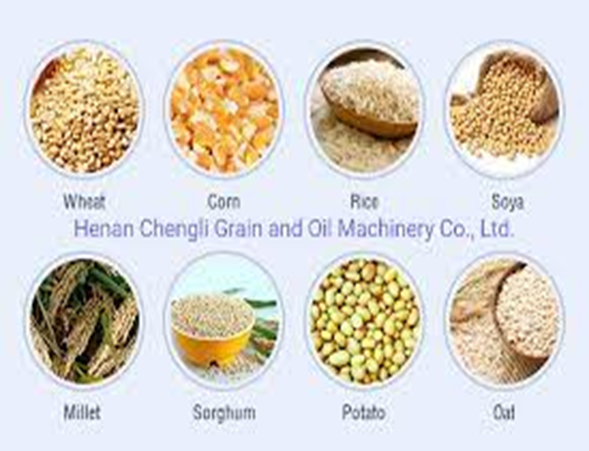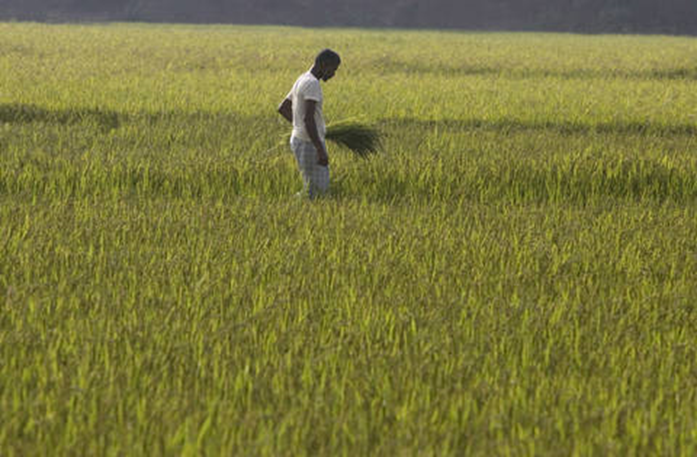Contents
- What are agricultural resources?
- The main 5 agricultural resources are.
- The main crops of Bangladesh.
- The top 10 agricultural products.
- As Bangladesh is suitable for agricultural resources
- What is Bangladesh famous for producing?
- What is agriculture sector in Bangladesh?
- Conclusion
What are agricultural resources?
Agricultural
resources means the land and on-farm buildings, equipment, manure
processing and handling facilities and processing and handling facilities which
contribute to the production, preparation and marketing of crops, livestock and
livestock products as a commercial enterprise, including a commercial horse.
The 5
agricultural resources are -
The major
agricultural products can be broadly grouped into foods, fibers, fuels and raw
materials (such as rubber). Food classes include cereals (grains),
vegetables, fruits, oils, meat, milk, eggs and fungi.
The main crops of Bangladesh.
Rice, wheat,
maize, potato, pulses, and oil seeds are major food crops in Bangladesh. While
rice is the primary staple food and the most important crop, wheat and maize
are of second and third importance.
The top 10 agricultural products?
There is a
wide array of crops grown on U.S. farms, including vegetable farms, row crop
farms, and tree nut operations, among many others. According to USDA
Economic Research Service (ERS), the top 10 produce crops in the U.S. are:
Corn. It is the most widely produced
feed grain in the United States, the majority of which goes towards feeding
livestock. Over 90 million acres of corn are grown for feed, industrial
products, and food and beverage products like cereal, alcohol, and sweeteners.
Cotton. The U.S. is the world’s third
largest producer of cotton, one of the most important textile fabrics. The U.S.
is the world’s leading exporter of cotton, and the industry contributes $21
billion a year to the economy and generates over 125,000 jobs.
Fruit. Many different fruits are grown
in the U.S., including apples, berries, citrus, and melons. Together with the
tree nut industry, the fruit industry contributes over $25 billion in farm cash
receipts.
Tree Nuts. Tree nuts like almonds,
pecans, walnuts, hazelnuts, and pistachios are grown many different places in
the U.S. Along with the fruit industry, the tree nut industry makes up 13
percent of the total receipts for all agricultural commodities and 7 percent
for all crops. However, both the fruit and tree nuts industries face
competition from foreign imports.
Rice. Rice is grown exclusively in the
southern U.S. and California with three different types of rice grown, short-,
medium-, and long-grain. The U.S. exports approximately half of its rice sales
volume to global markets.
Soybean and Oil Crops. The U.S. is the
leading soybean producer and exporter in the world. Soybeans account for about
90% of U.S. oilseed production, but we also produce other oilseeds, such as
peanuts, sunflower seed, canola, and flax.
Sugar and Sweeteners. The U.S. is both
one of the world’s largest producers of sugar and other sweeteners and one of
the greatest consumers. Sugars can come from sugarcane, sugarbeets and high
fructose corn syrup.
Vegetables. The vegetable industry is
comprised of a variety of sectors. It can be split into vegetables grown for
processing and those grown for fresh market sales. Upper Midwestern states like
Wisconsin, Minnesota, and Michigan and Pacific states like California,
Washington, and Oregon grow the most acreage of vegetables for processing,
while Florida, California, Arizona, Georgia and New York have the most acreage
growing vegetables for the fresh market.
Pulses. Pulses include beans, peas,
legumes, and peanuts. Along with the vegetable industry, pulses account for
approximately 14 percent of U.S. cash crop receipts.
Wheat. Wheat is the third largest field
crop in the U.S., both in acreage and gross farm receipts. About half of the
U.S.’s wheat production is exported.
As Bangladesh is suitable for agricultural resources?
Because
of Bangladesh's fertile soil and normally ample water supply, rice can be
grown and harvested three times a year in many areas. Due to a number of
factors, Bangladesh's labour-intensive agriculture has achieved steady
increases in food grain production despite the often unfavorable weather
conditions.
Bangladesh
has an abundance of low-cost labor, a climate that allows crops to grow
year round, and some of the most fertile soil in the world. Most soils in
Bangladesh are alluvial, meaning they are good, arable land, but highly
susceptible to flooding.
What is Bangladesh famous for producing?
Bangladesh
produces a variety of agricultural products such as rice, wheat, corn,
legumes, fruits, vegetables, meat, fish, seafood, and dairy products. Rice is
the main staple in the Bangladeshi diet.
What is agriculture sector in Bangladesh?
Agriculture
is the largest employment sector in Bangladesh, making up 14.2 percent of
Bangladesh's GDP in 2017 and employing about 42.7 percent of the workforce. ...
Because of Bangladesh's fertile soil and normally ample water supply, rice can
be grown and harvested three times a year in many areas.
Agriculture
plays a critical role in transforming economies to reach the goal, along
with achieving other essential development goals like ensuring food security
and improving nutrition. ... For this process to be successful, the
agricultural sector must be modernized.






I appreciate the efforts which you have put into this blog. This post provides a good idea about Agriculture Market Research Reports Genuinely, it is a useful article to increase our knowledge. Thanks for sharing such articles here.
ReplyDeleteThis is excellent information about Soil Analysis Laboratory in UK which is shared by you. This information is meaningful and magnificent for us to increase our knowledge about it. Keep sharing this kind of information. Thank you.
ReplyDeletegood post
ReplyDelete